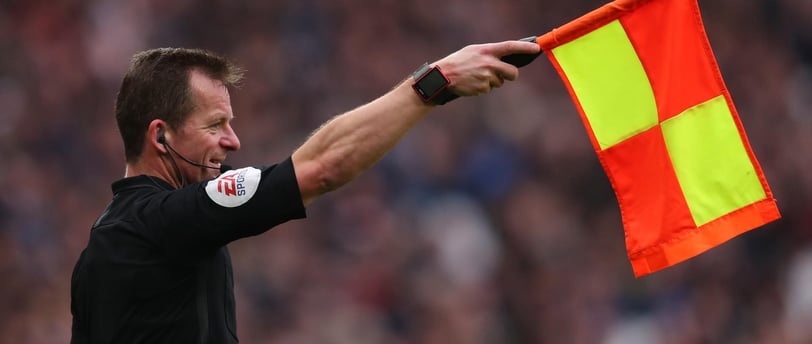Read football & basketball articles and other sports only at Finessekick.com
The History of the Offside Rule in Football
The offside rule is one of the most important and controversial rules in football. This rule often becomes a debate on the field due to its complex interpretation and significant impact on determining the course of the match. Here is the long journey of the evolution of the offside rule from its first introduction to its current form.
FOOTBALL
A. Sahrul Romadhon
11/3/20243 min read


1. Early Beginnings: 19th Century
The offside rule was first introduced in English football in the early 19th century. At that time, football was played with rules vastly different from those we know today. The concept of offside during this period was quite strict, similar to the rules used in rugby. According to the rules at that time, a player was considered offside if they were ahead of the ball when it was passed by a teammate. As a result, this rule made it almost impossible for players to attack and score from advanced positions because they had to stay behind the ball at all times.
2. Early Evolution (1863): The Cambridge Rules
In 1863, football rules became more structured with the establishment of the Football Association (FA) in England. At that time, the offside rule also underwent changes through the "Cambridge Rules." According to these rules, a player was considered offside if they were ahead of the ball when it was passed, similar to rugby rules. The difference was that this rule stated that players could not run past the ball to catch a pass from a teammate, requiring at least three defenders to be between the attacking player and the goal.
This three-defender rule then became the standard in football and lasted quite a long time in the game.
3. 1925 Reform: From Three to Two Defenders
The first major change to the offside rule occurred in 1925. After the three-defender offside rule was deemed too defensive and hindered the flow of the game, the FA decided to change the rule by reducing the number of defenders required from three to two. This meant that an attacking player was considered onside if there were at least two opposing players between them and the goal when the ball was passed.
This change had a significant impact on the game. With a more lenient rule, attacking strategies became easier, and the number of goals scored increased significantly. This benefited attackers, and matches became more dynamic and exciting for spectators.
4. 1990 Modernization: Change to Level Position
In 1990, FIFA made another major change that redefined the offside position. According to the new rule, an attacking player was no longer considered offside if they were level with the last defender. This meant that if an attacker was level with the last defender when the ball was passed, they were still considered onside.
This new rule was implemented to further support attacking play and give attackers more freedom to stay in the goal area without the risk of strict offside. This also played a role in increasing the number of goals scored and making matches more exciting.
5. Addition of Active and Passive Aspects (2005)
As football evolved, FIFA felt the need to clarify the increasingly complex offside rule. In 2005, the offside rule was modified by adding the concepts of "active" and "passive." This meant that a player would not be considered offside even if they were ahead of the last defender if they were not active in the play. A player was only considered offside if they directly participated in the play, such as obstructing the goalkeeper's view or attempting to chase the ball.
This change aimed to further benefit attacking play, so the game would not always stop for offside when players were not directly involved in the play. However, this rule also sparked debate because the interpretation of "active" and "passive" was often subjective and led to differing opinions.
6. VAR Technology and Offside (2018)
The latest development in the offside rule occurred in the modern era with the introduction of Video Assistant Referee (VAR) in 2018. This technology allowed referees to review offside decisions more accurately using video replays. VAR helped referees determine whether a player was in an offside position by looking at the exact position of each part of the player's body.
Although VAR was intended to provide certainty, the use of this technology was not without controversy. Some offside decisions made using VAR were considered too strict, such as when only a small part of the player's body was deemed offside. Nevertheless, VAR has helped reduce errors in offside decisions and provided better accuracy in matches.
7. Future Plans: Offside Automation
With the rapid development of technology, FIFA and other football organizations are testing an automated offside system supported by artificial intelligence and sensors. This technology can detect player positions in real-time and notify referees if an offside occurs. This automation system has been tested in several tournaments and is expected to be implemented in various major competitions in the future.
Conclusion
The offside rule in football has undergone a long and complex evolution, starting from strict rules to more flexible rules favoring attacking play. These rule changes continue to adapt to the needs of the modern game, which is increasingly dynamic and exciting for spectators. With the presence of technology such as VAR and the development of automated systems, the offside rule continues to move towards a more accurate and fair era in every match.
FinesseKick.com
Discover the latest articles about the world of sports.
Know More
Contact
© 2024. All rights reserved.
